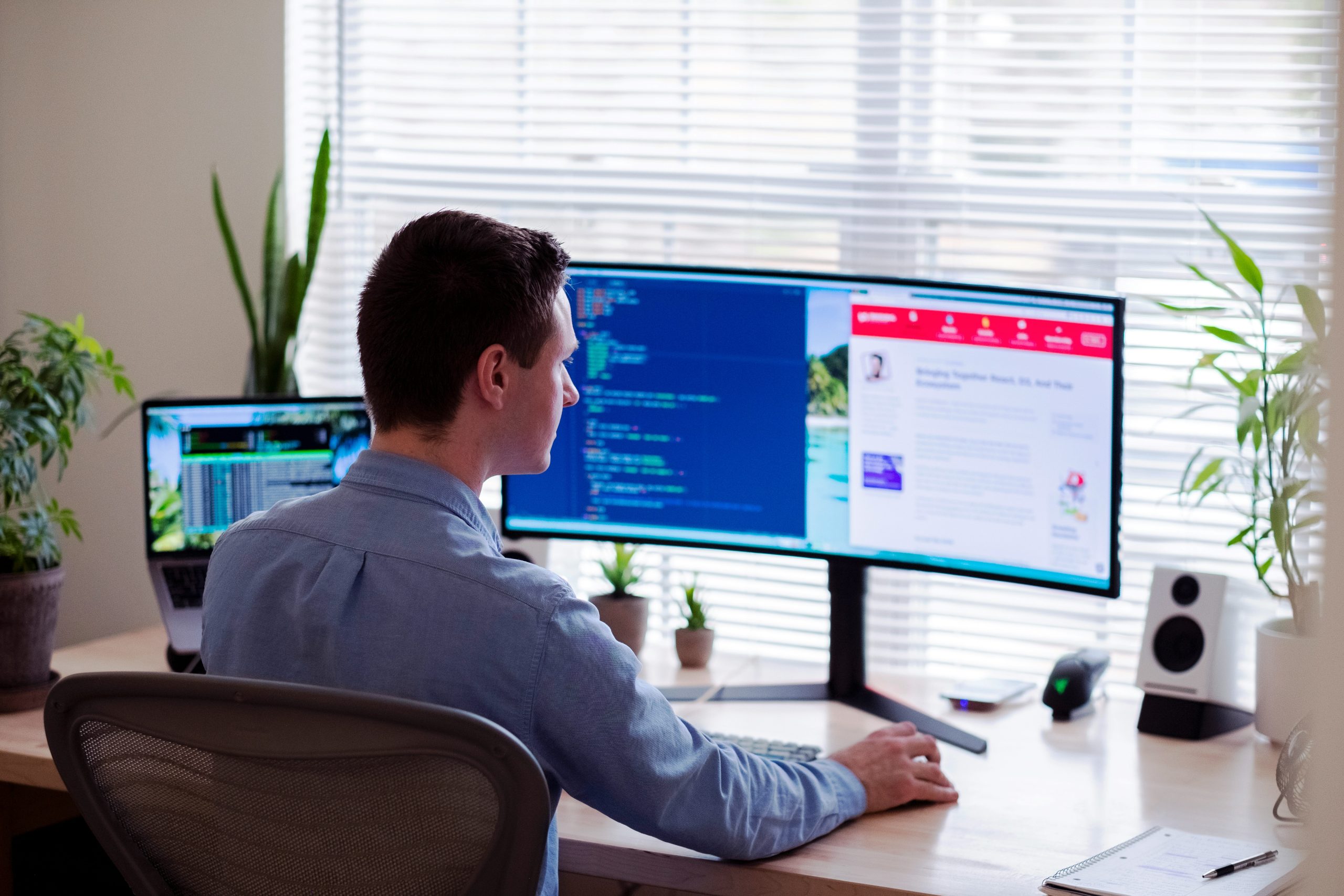Remote work has become a significant part of our professional lives, driving the need for tools that enhance productivity and maintain efficiency. Whether you’re working from a home office or a café, having the right tools can make a substantial difference in your daily output. Effective communication, seamless collaboration, and robust project management are essential for staying productive. With numerous tools available, it’s vital to choose ones that cater to your specific needs. This article highlights top tools across various categories to help you stay connected, organised, and efficient while working remotely.

Communication and Collaboration: Keeping Teams Connected
Effective communication and collaboration are crucial for remote teams. Tools like Slack and Microsoft Teams provide platforms where team members can exchange messages, share files, and even integrate other productivity apps. Slack offers various channels for different projects, enabling focused discussions without cluttering email inboxes. Microsoft Teams combines chat, video meetings, and file collaboration in one place, enhancing team coherence and productivity.
Video conferencing tools such as Zoom and Google Meet are indispensable for virtual meetings, allowing face-to-face interactions and screen sharing to discuss projects in detail. These tools support high-quality video calls and come with features like breakout rooms and virtual backgrounds, making meetings more engaging and organised. Additionally, tools like Trello and Asana help track tasks and projects, ensuring everyone is on the same page.
Project Management Solutions: Streamlining Workflow and Task Tracking
Project management tools are essential for organising tasks, setting deadlines, and tracking progress. Platforms like Asana and Trello offer user-friendly interfaces to create projects, assign tasks, and monitor their completion. Asana provides a comprehensive dashboard where team members can see their tasks, set priorities, and collaborate through comments and attachments. This transparency ensures that everyone knows their responsibilities and deadlines.
Trello, with its visual board and card system, allows teams to move tasks through different stages of completion. It’s particularly useful for agile workflows and Kanban-style project management. Each card can contain checklists, due dates, and attachments, providing all necessary details at a glance. Monday.com is another powerful tool that offers customisable workflows and integrations with other apps like Slack and Zoom, facilitating a seamless project management experience.
These tools not only improve task management but also enhance accountability and productivity.
Cloud Storage and File Sharing: Ensuring Seamless Access to Documents
Cloud storage and file sharing tools are indispensable for remote work, ensuring that documents are accessible from anywhere. Google Drive and Dropbox are popular choices, offering ample storage space and robust sharing capabilities. Google Drive integrates seamlessly with other Google Workspace apps, making collaboration on documents, spreadsheets, and presentations straightforward. Dropbox, with its intuitive interface, allows easy file syncing and sharing across multiple devices.
For professionals who frequently work with PDFs, tools like Smallpdf provide invaluable services, such as converting PDFs to Word documents. This functionality is particularly useful when edits are required in a document that was originally in PDF format. With a simple drag-and-drop feature, Smallpdf ensures that your PDF to Word conversions are quick and accurate, maintaining the integrity of the original document.
OneDrive, integrated with Microsoft Office, is another excellent tool for cloud storage and file sharing. It enables users to store files in the cloud and access them from any device. These cloud solutions ensure that your documents are always up to date, facilitating smooth collaboration and continuous workflow, regardless of where team members are located.
Time Management: Tools to Stay Organised and Meet Deadlines
Effective time management is critical for maintaining productivity in a remote work environment. Tools like Todoist and Microsoft To Do are designed to help individuals and teams organise their tasks and priorities efficiently. Todoist offers a clean, user-friendly interface where users can create tasks, set deadlines, and categorise them into different projects. The ability to set recurring tasks and receive reminders ensures that nothing falls through the cracks.
Microsoft To Do integrates seamlessly with Outlook, allowing users to manage their tasks directly from their email interface. This integration helps in keeping track of tasks without switching between different applications. Additionally, Trello, known for its project management capabilities, also serves as an effective time management tool with its card-based system, helping users visualise their tasks and progress.
Calendar apps such as Google Calendar and Outlook Calendar play a crucial role in time management. They allow users to schedule meetings, set reminders, and block time for focused work. Time-tracking tools like Toggl can provide insights into how time is spent, helping to identify areas for improvement and ensuring that deadlines are met.
Virtual Meeting Platforms: Enhancing Remote Conferencing
Virtual meeting platforms have become a cornerstone of remote work, enabling teams to communicate and collaborate effectively despite being geographically dispersed. Zoom and Microsoft Teams are two leading platforms that offer comprehensive features for virtual meetings. Zoom is renowned for its high-quality video and audio capabilities, along with features such as breakout rooms, screen sharing, and virtual backgrounds, making meetings more interactive and engaging.
Microsoft Teams integrates video conferencing with other collaboration tools, such as chat and file sharing, within the Microsoft 365 suite. This integration facilitates a seamless transition between different modes of communication and collaboration, ensuring that teams can stay connected and productive. Google Meet, another popular option, offers reliable video conferencing with integration into Google Workspace, making it easy to schedule and join meetings directly from Google Calendar.
For smaller, more casual meetings, platforms like Skype and Slack’s video call feature are also effective. These tools support direct video calls and screen sharing, making them ideal for quick check-ins and informal discussions. By leveraging these virtual meeting platforms, remote teams can maintain effective communication, foster collaboration, and ensure that everyone remains aligned with the team’s goals and objectives.

Mental Health and Wellness Apps: Supporting Remote Workers’ Wellbeing
The shift to remote work has brought mental health and wellness into sharper focus. Supporting mental wellbeing is crucial for maintaining productivity and job satisfaction. Apps like Headspace and Calm provide guided meditations, sleep stories, and relaxation techniques to help reduce stress and promote mental clarity. These tools offer a variety of sessions tailored to different needs, from managing anxiety to improving focus.
Exercise is another vital component of mental health. Apps like Fitbit and MyFitnessPal encourage physical activity by tracking steps, workouts, and nutritional intake. Regular exercise not only benefits physical health but also boosts mood and cognitive function, which can be especially beneficial for remote workers who may experience prolonged periods of inactivity.
For those seeking a sense of community and peer support, platforms like Talkspace and BetterHelp connect users with licensed therapists for online counselling sessions. These services provide professional support without the need for in-person visits, making it more accessible for remote workers.
Wellness apps such as Fabulous and Habitica help users build healthy routines and habits by gamifying daily tasks and goals. By incorporating these tools into their daily routines, remote workers can create a balanced lifestyle that supports both their mental and physical health. Emphasising wellness ensures that remote workers remain resilient and productive in their professional lives.
Final Thoughts
Adopting the right tools can significantly enhance productivity in a remote work environment. From effective communication and collaboration platforms to robust project management solutions, these tools address the unique challenges of remote work. Cloud storage and file sharing ensure that documents are accessible from anywhere, while time management tools help keep tasks and deadlines organised. Virtual meeting platforms enable seamless communication, and wellness apps support mental and physical health. By leveraging these tools, remote workers can maintain efficiency, stay connected with their teams, and achieve a healthy work-life balance.
